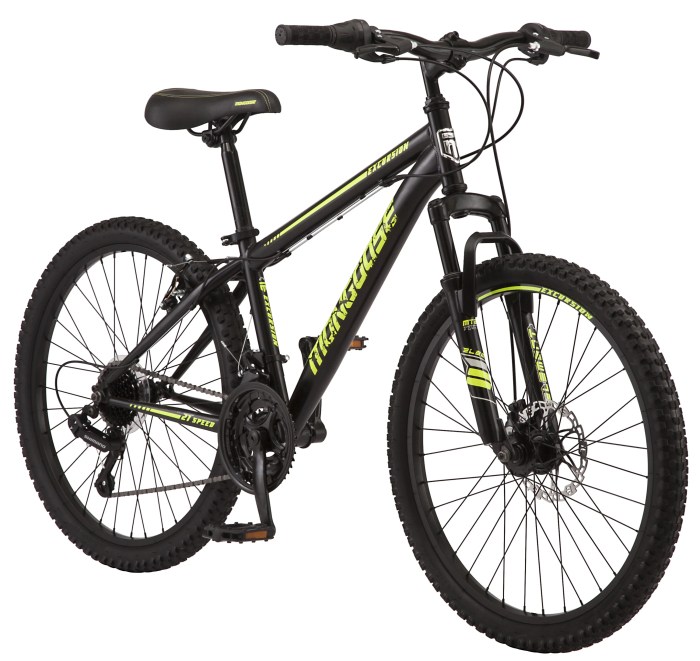Best time to visit London? It depends! London’s charm unfolds throughout the year, from the vibrant energy of summer festivals to the cozy charm of winter markets. This guide delves into the best time for you, considering everything from weather patterns to crowd levels and, of course, your budget. We’ll explore each season, highlight key events, and help you choose the perfect time to experience the magic of London.
London’s weather varies significantly across the seasons. While summers offer warm days perfect for exploring parks and enjoying outdoor activities, winters bring a unique charm with festive markets and cozy pubs. Understanding these differences is key to planning the trip that perfectly suits your preferences.
Introduction to London’s Seasons: Best Time To Visit London
London, a city renowned for its iconic landmarks and vibrant culture, experiences all four seasons, each with its own unique charm and weather patterns. Understanding these seasonal variations is key to planning your trip and making the most of your time in the city. From the crisp autumn air to the potentially unpredictable spring showers, London’s weather can be a fascinating mix of extremes.
The city’s location in the temperate zone influences the gradual shifts in temperature and precipitation.
Seasonal Weather Characteristics
London’s weather is famously changeable, making it crucial to be prepared for all eventualities. The spring season often brings unpredictable showers and fluctuating temperatures, a hallmark of the British climate. Summer, though warm, is typically not excessively hot, with average highs that are usually comfortable. Autumn offers a beautiful blend of colors and crisp, cool air, while winter is characterized by its cold temperatures and potential for rain or snow.
The nuances in these patterns, while sometimes frustrating, are integral to the city’s personality.
Average Temperatures and Precipitation
London’s climate, while sometimes unpredictable, displays consistent seasonal patterns. Understanding these patterns will help you prepare for your trip and make the most of the city’s unique offerings. The data below provides a comprehensive overview of the typical weather conditions across the year.
| Month | Average High (°C) | Average Low (°C) | Precipitation (mm) |
|---|---|---|---|
| January | 5 | 1 | 58 |
| February | 5 | 1 | 55 |
| March | 7 | 3 | 50 |
| April | 10 | 5 | 55 |
| May | 14 | 8 | 60 |
| June | 18 | 12 | 65 |
| July | 19 | 13 | 60 |
| August | 18 | 12 | 55 |
| September | 15 | 9 | 50 |
| October | 11 | 6 | 60 |
| November | 8 | 4 | 65 |
| December | 6 | 2 | 60 |
Events and Festivals

London is a vibrant city that comes alive with a plethora of events and festivals throughout the year. From grand celebrations to intimate gatherings, there’s something for every taste and interest. These events enrich the city’s cultural tapestry and provide a platform for diverse communities to showcase their traditions. The atmosphere is electric, drawing in both locals and tourists alike.London’s events calendar is meticulously planned to cater to a broad spectrum of interests.
This allows for a unique experience for visitors, irrespective of their personal preferences. Each event contributes to the overall dynamism of the city and is a testament to its rich history and enduring spirit.
Major London Festivals and Events
London’s festivals and events calendar is packed with exciting happenings. From world-renowned theatre productions to immersive street parties, the city truly celebrates its culture and heritage. The diverse range of events ensures that there’s always something captivating to witness.
- London Film Festival (LFF): Typically held in October, this prestigious film festival showcases a wide array of international and independent films. The atmosphere is sophisticated and buzzing with excitement. The red carpet events, screenings, and after-parties create a glamorous and high-energy experience. The festival is known for attracting renowned film personalities and critics. Locations include various cinemas and venues across the city, primarily concentrated in South Bank and Leicester Square areas.
- Pride in London: Celebrated in June, this vibrant parade and festival celebrates LGBTQ+ pride. The atmosphere is electrifying with a kaleidoscope of colors, music, and revelry. The parade, which winds through central London, is a spectacular display of community spirit and unity. The festival includes diverse events, including live performances, street parties, and workshops. The event takes place primarily in central London, particularly around Vauxhall and the South Bank.
Spring is generally the best time to visit London, with pleasant temperatures and fewer crowds than the summer months. However, if you’re looking for a unique outdoor experience, you might consider a trip to a tiny home village like the one in Glacier National Park. The tiny home village glacier national park offers a tranquil escape amidst stunning scenery, perfect for a different kind of London break.
Ultimately, the best time to visit London still depends on your preferences and what you want to do.
- The Notting Hill Carnival: Taking place in August, this iconic street festival is a vibrant celebration of Caribbean culture. The energy is infectious with vibrant costumes, music, and dancing. The atmosphere is one of joyous celebration and camaraderie. The sheer scale of the event, involving hundreds of thousands of participants, makes it one of London’s most impressive spectacles. It is primarily held in Notting Hill, with parts of Ladbroke Grove and surrounding areas also involved.
- Christmas Markets: Several markets pop up throughout December, offering festive cheer. The atmosphere is warm and inviting, filled with the scent of roasted chestnuts and the sounds of carols. These markets offer a chance to shop for unique gifts and enjoy traditional festive treats. The markets are located in various parts of London, including Hyde Park, Trafalgar Square, and South Bank, amongst others.
Timeline of Key Events
| Event | Dates | Location(s) | Description |
|---|---|---|---|
| London Film Festival | Typically October | Various cinemas and venues, primarily South Bank and Leicester Square | Prestigious film festival showcasing international and independent films. |
| Pride in London | June | Central London, Vauxhall and South Bank areas | Vibrant parade and festival celebrating LGBTQ+ pride. |
| Notting Hill Carnival | August | Notting Hill, Ladbroke Grove, and surrounding areas | Iconic street festival celebrating Caribbean culture. |
| Christmas Markets | December | Hyde Park, Trafalgar Square, South Bank, and other locations | Festive markets offering unique gifts and traditional treats. |
Crowd Levels and Tourist Activity
London, a global hub for tourism, attracts millions of visitors annually. Understanding the ebb and flow of these crowds is crucial for planning a trip and ensuring a positive experience. Different times of year significantly impact the number of tourists, impacting everything from the ease of navigating attractions to the cost of accommodation.
Typical Tourist Crowds Throughout the Year
London’s tourist crowds fluctuate dramatically throughout the year. Peak season, typically encompassing the summer months, sees a surge in visitors, leading to significantly larger crowds at popular attractions. Conversely, the off-peak season, encompassing the winter months, experiences a noticeable decrease in tourist numbers, often resulting in a more relaxed and less congested environment.
Comparison of Peak and Off-Peak Tourist Activity
The difference between peak and off-peak tourist seasons is substantial. During peak season, attractions often experience long queues, and finding available accommodation or dining reservations can be challenging. Conversely, off-peak periods typically offer shorter wait times and more readily available resources. This difference is a major factor influencing the overall visitor experience.
Impact of Large Crowds on the Visitor Experience
Large crowds can significantly impact the visitor experience in London. Long queues at attractions, difficulty navigating crowded areas, and increased competition for resources can detract from the enjoyment of the trip. However, strategically planning trips during off-peak seasons can mitigate these issues and enhance the overall experience.
Spring in London is lovely, with pleasant temperatures and blooming flowers. But if you’re looking for something truly unique, consider exploring immersive art experiences in Uluru, Kings Canyon, and Alice Springs, Australia. This fantastic trip offers a different kind of charm, contrasting with the historical sights of London, and it’s worth checking out immersive art experiences Uluru Kings Canyon Alice Springs Australia for more details.
Ultimately, the best time to visit London depends on your priorities, but spring often delivers the perfect blend of pleasant weather and vibrant city life.
Estimated Visitor Numbers per Month
The number of visitors to London varies considerably throughout the year. These figures are estimates and can fluctuate based on various factors.
| Month | Estimated Visitors (in millions) | Crowds (High/Medium/Low) |
|---|---|---|
| July | 3.5 | High |
| August | 3.8 | High |
| September | 3.2 | Medium |
| October | 2.8 | Medium |
| November | 2.5 | Low |
| December | 2.7 | Medium (Holiday Season) |
| January | 2.2 | Low |
| February | 2.0 | Low |
| March | 2.4 | Medium |
| April | 2.6 | Medium |
| May | 2.9 | Medium |
| June | 3.1 | Medium |
Accommodation and Transportation
London’s vibrant atmosphere attracts millions of visitors annually, making strategic planning for accommodation and transportation crucial for a smooth and enjoyable trip. Understanding the fluctuations in pricing and availability across different seasons is essential for optimizing your budget and experience. Factors like popular events and tourist activity levels significantly impact both accommodation costs and transport expenses.Accommodation choices in London range from budget-friendly hostels to luxurious hotels, catering to diverse needs and preferences.
Transportation options include the extensive Underground system, buses, and ride-sharing services. Navigating these options effectively, especially during peak tourist seasons, requires careful consideration of cost and availability.
Accommodation Costs Throughout the Year
London’s accommodation market reflects seasonal variations in demand. High-demand periods, such as summer and major events, usually lead to higher prices. Conversely, off-season months offer more affordable options. This fluctuation is typical in major tourist destinations, where demand significantly impacts pricing.
| Month | Average Hotel Price (GBP) | Average Transportation Cost (GBP) |
|---|---|---|
| April | 150-250 | 30-50 |
| May | 180-280 | 35-60 |
| June | 200-350 | 40-70 |
| July | 250-400 | 50-80 |
| August | 280-450 | 55-90 |
| September | 200-300 | 40-60 |
| October | 180-280 | 35-55 |
| November | 150-250 | 30-45 |
| December | 180-300 | 35-50 |
| January | 150-250 | 30-40 |
| February | 150-220 | 25-40 |
| March | 160-260 | 30-50 |
The table provides a general guideline. Actual prices can vary based on specific hotel choices, room types, and availability. Booking in advance, especially during peak seasons, can often secure better rates.
Transportation Costs During Peak and Off-Peak Periods
London’s transport network, particularly the Underground, experiences higher demand during peak tourist seasons. Consequently, travel costs can be more expensive during these periods. Off-peak travel, on the other hand, often provides more affordable options. This cost difference is directly related to the level of demand for transportation services.
For example, a daily Oyster card pass might cost £15-20 during peak season, but the same pass might be available for £10-15 during the shoulder seasons or off-peak months.
Challenges and Advantages of Travelling at Specific Times
Travelling during popular tourist seasons like summer often presents challenges like higher accommodation and transport costs. However, it also offers opportunities to experience the city’s vibrant atmosphere and participate in a wide range of events and festivals. Conversely, off-peak travel can offer more affordable options and a quieter experience, allowing visitors to explore at a more relaxed pace.
The choice of when to travel is influenced by personal preferences and priorities.
Specific Considerations for Visitors
London, a vibrant city with endless attractions, beckons visitors throughout the year. However, the best time to experience it depends significantly on individual preferences and priorities. Factors like budget, desired weather, and preferred crowd levels play crucial roles in choosing the optimal travel period.Understanding the interplay of costs, weather, and personal preferences is vital for making the most of your London adventure.
Careful consideration of these elements ensures a smooth and enjoyable trip, tailored to your unique needs.
Cost of Activities and Attractions Across Seasons
London’s attractions, like the Tower of London and the British Museum, maintain consistent prices year-round. However, seasonal events and special exhibitions can influence the cost of certain experiences. For instance, Christmas markets often see higher prices for goods and festive activities. Consider these fluctuations when budgeting for your trip. Additionally, consider that accommodation prices tend to be higher during peak seasons, impacting overall travel expenses.
Impact of Weather Conditions on Outdoor Activities, Best time to visit london
London’s weather can vary significantly throughout the year, impacting outdoor activities. Summer, while offering pleasant temperatures, can be crowded and lead to long queues at popular attractions. Conversely, winter can bring unpredictable weather, potentially affecting planned outdoor excursions. For example, a sudden downpour in summer can disrupt picnics and outdoor tours, while cold and wet weather in winter can impact walking tours and sightseeing.
Visitors should be prepared for fluctuating conditions and plan accordingly.
Best Time to Visit Based on Individual Interests and Preferences
The optimal time to visit London hinges on personal preferences. History buffs might find the spring or autumn seasons ideal, as crowds are typically smaller, allowing for a more intimate exploration of historical sites. Those seeking vibrant summer experiences should be prepared for higher prices and larger crowds, though the longer daylight hours allow for more extended exploration.
Conversely, winter offers a different charm, with festive markets and the unique ambiance of the holiday season.
Selecting the Best Time Based on User Preferences
A structured approach to selecting the best time to visit London can be helpful. This involves considering key factors and ranking them based on individual importance. A table can be used to evaluate these factors:
| Factor | Importance (1-5, 5 being highest) | Seasonal Impact |
|---|---|---|
| Budget | [User Input] | Higher in summer, spring, and holidays. |
| Weather Tolerance | [User Input] | Summer: Pleasant but crowded. Winter: Potentially unpredictable. Spring/Autumn: Moderate temperatures. |
| Desired Crowd Levels | [User Input] | Lowest in spring and autumn. Highest in summer and holidays. |
| Specific Interests | [User Input] | Consider specific events and exhibitions for optimal timing. |
By evaluating these factors, visitors can create a personalized checklist and select the time that aligns best with their priorities. For instance, someone with a limited budget might opt for the spring or autumn, while someone who enjoys warm weather might prefer the summer.
Budget and Value

London, a city renowned for its iconic landmarks and vibrant culture, can also be a significant investment. Understanding the fluctuations in prices for various services and goods is crucial for maximizing your budget and value during your visit. Careful planning can help you enjoy the city without breaking the bank, especially if you know the best time to visit and how to manage your expenses.The cost of visiting London can vary dramatically depending on the time of year, the type of accommodation chosen, and the activities you plan to undertake.
Factors like peak tourist seasons, major events, and even the weather can influence prices. Consequently, budgeting strategically and choosing the right time to visit can significantly impact the overall cost of your trip.
Price Fluctuation in London
London’s prices for accommodation, transportation, and attractions experience significant fluctuations throughout the year. Peak season, which often coincides with major events or holidays, usually sees a sharp increase in prices for all services. Conversely, the off-season offers more affordable options, allowing visitors to save money on flights, hotels, and entertainment.
London’s charm is best experienced during the spring, when the blossoms are in full bloom and the city buzzes with a vibrant energy. Thinking about the best time to visit London? Perhaps you’ll be inspired by the historical figures who shaped the city’s past, like Marie Antoinette, a figure frequently featured in pop culture. Checking out articles like ” marie antoinette pop culture icon ” might spark some interesting insights into her legacy.
Ultimately, the ideal time for you to visit London will depend on your interests and what you want to see and do.
Cost-Effectiveness of Visiting During Different Periods
The cost-effectiveness of visiting London varies greatly depending on the time of year. Shoulder seasons, typically spring and autumn, often present a balance between pleasant weather and fewer crowds, resulting in lower prices for accommodations and activities. Conversely, summer and winter holidays tend to be more expensive due to higher demand. For example, booking flights and hotels well in advance can help you secure better deals and save money.
Comparison of Travel and Activity Costs
| Season | Average Flight Cost (roundtrip) | Average Hotel Cost (per night) | Average Daily Spending on Activities |
|---|---|---|---|
| Summer (June-August) | £400-600 | £200-350 | £80-150 |
| Shoulder Seasons (Spring & Autumn) | £300-500 | £150-250 | £60-120 |
| Winter (December-February) | £350-550 | £100-200 | £50-100 |
This table provides a general overview of the cost differences across various seasons. Keep in mind that these are averages, and individual costs may vary based on your specific travel plans. For instance, traveling during popular events or booking last-minute accommodations can impact the cost significantly.
Average Spending Per Day
The average daily spending in London varies considerably based on the season. During peak summer months, daily expenses can range from £80 to £150, encompassing transportation, meals, and attractions. In contrast, the average spending during shoulder seasons (spring and autumn) can be reduced to £60 to £120, while winter months might see average daily spending closer to £50 to £100.
Consider budgeting approximately £50-100 per day for a budget-friendly trip, increasing to £100-150 for a moderate experience, and £150+ for a luxury trip. These are just estimates and can be adjusted based on your specific preferences.
These figures are just estimations. Factors such as dining choices, transportation preferences, and the extent of sightseeing activities will influence the total cost.
Visual Representation of Data
London’s allure transcends its iconic landmarks; understanding the city’s nuances, from weather patterns to visitor flow, is key to planning the perfect trip. Visual representations of data allow us to quickly grasp these subtleties and make informed decisions about the optimal time to visit.
Average Monthly Temperature and Precipitation
London’s climate, while generally mild, fluctuates throughout the year. A visual representation, such as a line graph, displaying average monthly temperatures and precipitation levels provides a clear picture of the weather. This allows visitors to anticipate potential conditions and pack accordingly. A crucial element is the visual distinction between average high and low temperatures for each month, offering a more nuanced understanding of temperature ranges.
This example visual representation shows average monthly temperatures (blue line) and precipitation (green line) for London. The distinct patterns highlight the warmest months (typically July and August) and the colder months (January and February). Noticeable seasonal variations in precipitation, with higher levels in autumn and winter, are also evident.
Visitor Numbers by Month
Visitor numbers fluctuate throughout the year. A bar graph displaying visitor numbers for each month provides a clear view of peak and off-peak tourist seasons. Understanding these patterns can help visitors plan their trip around crowds or potentially find better deals in quieter periods. This hypothetical bar graph depicts monthly visitor numbers, showcasing the highest visitor counts in summer months and lower numbers in winter.
The visual clarity highlights the significant fluctuations in visitor volume, a key factor to consider for planning travel.
Accommodation Costs by Month
The cost of accommodation varies considerably across the year. A line graph illustrating the average cost of accommodation for each month provides insight into price fluctuations. This allows potential travelers to plan budgets and make informed decisions about booking accommodations in advance. The graph shows the average accommodation costs, peaking during the summer months and generally decreasing during the shoulder seasons.
This allows visitors to budget effectively.
Last Recap
Ultimately, the best time to visit London is a personal decision. By considering your interests, budget, and tolerance for crowds, you can pinpoint the ideal season for an unforgettable London adventure. Whether you crave summer fun, winter warmth, or something in between, this guide provides the tools to make the most of your trip. Enjoy your London exploration!



























